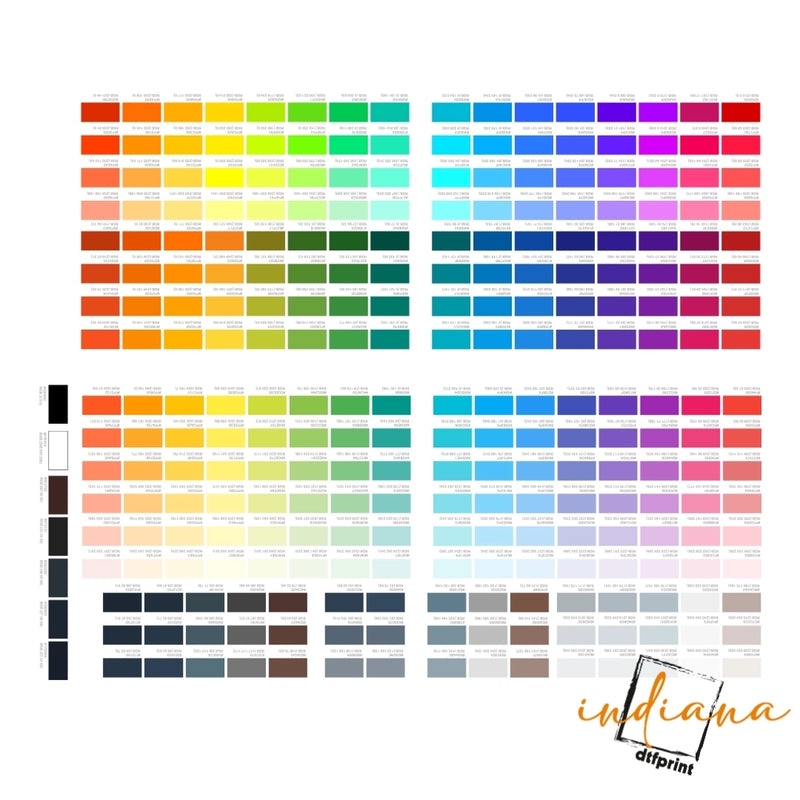If you’re into DTF printing, you know it delivers vibrant, sharp designs. But did you know that humidity effects on DTF printing and temperature and humidity in heat pressing play a huge role in print quality? It’s not just about your printer or inks, your environment matters a lot.
In this post, we’ll explore the ideal DTF printing temperature settings, common print issues caused by the environment, and simple fixes to help your prints look perfect every time.
Why Your Printing Environment Matters
The air surrounding you is equally as crucial as the equipment or ink that most people think of when they think of printing. How well the ink sticks to the film, how well the adhesive sticks when heated, and even how long your prints last are all influenced by the humidity and temperature of the DTF printing environment conditions.
Excessive humidity can distort DTF films and lead to avoid DTF transfer warping, while incorrect heat press settings might cause peeling or cracking. To avoid these issues, control moisture, heat, and always follow the proper storage temperature for DTF films to keep your prints clean and long-lasting.
The Impact of Humidity on DTF Printing
Humidity is basically how much water vapor is floating in the air around you. When there’s too much, it causes a bunch of problems in DTF printing:
- Warped Films: DTF films soak up moisture and start to curl or warp, making it tough to print accurately.
- Moisture Problems in DTF Printing: Excess moisture can mess up the ink curing and the adhesive’s bonding process during heat pressing.
- Transfer Warping: After heat pressing, transfers can bubble or lift if there’s moisture trapped inside.
To avoid issues, keep humidity between 40–60%. Too dry causes static and ink flow problems; too wet affects films. Are you unsure of how to control humidity in print shop? Make use of humidifiers and dehumidifiers as well as adequate ventilation.
Temperature’s Role in Great DTF Prints
Temperature plays a big role in DTF results, both room and press heat matter. Keep your DTF printer room temperature stable to avoid clogs or ink flow issues.
Watch out for heat press temperature fluctuations, which can lead to fading or peeling. Consistently checking your heat press helps maintain ideal DTF printing temperature settings, keeping your transfers sharp and long-lasting.
Tips to Keep Humidity and Temperature Just Right
You don’t need fancy equipment to keep your printing space balanced. Here are some simple ways to control your environment and improve print quality:
- Run a dehumidifier or humidifier as needed.
- Store your DTF films properly in sealed bags with desiccants to keep moisture out.
- Keep your heat press calibrated and don’t open it mid-press to maintain steady heat.
You can prevent serious problems like transfer warping and ghosting by controlling the temperature and humidity throughout the heat pressing process, which will maintain the crisp, expert appearance of your prints.
Common DTF Print Quality Issues from Environment Problems
If your humidity or temperature is off, here’s what you might see:
- Warped Transfers: Films curl up because of moisture.
- Peeling or Cracking: Heat press temperature too low or moisture trapped during pressing.
- Ghosting or Double Images: Happens when the transfer shifts or heat press temps fluctuate.
- Smudging: Ink doesn’t dry right due to high humidity.
- Fading Colors: Poor adhesion from incorrect pressing temperature or moisture problems.
Knowing these issues helps you quickly figure out what’s wrong and fix it.
Indiana DTF Has Your Back
At Indiana DTF, we know how tricky it can be to balance all these details. That’s why we offer top-notch films and inks designed to hold up well in different temperature and humidity conditions.
Plus, we’re here to help you with advice on DTF printing troubleshooting tips and maintaining the right DTF printing temperature settings so your prints always shine.
Wrapping it Up
DTF printing opens amazing possibilities, but you have to respect the little things like your environment to get the best results. Controlling humidity effects on DTF printing and nailing your temperature and humidity in heat pressing will save you time, money, and frustration.
Keep your shop’s humidity balanced, your heat press calibrated, and your films stored well. These small steps can prevent major problems like peeling, warping, or ghosting.
Want to get the best out of your DTF printing? Check out Indiana DTF for supplies and expert help that make a difference.
Frequently Asked Questions
1. What’s the heat press best temperature for DTF transfers?
The sweet spot for heat pressing DTF transfers is between 300°F and 320°F for about 10 to 15 seconds. That’s just enough to get a solid bond—without harming your fabric.
2. How are my DTF prints affected by humidity?
Your prints may get severely harmed by excessive air moisture; think of twisted, peeling, or smudged film. Try to keep the humidity in your location between 40% and 60% for seamless results.
3. How can the humidity level at my printing be managed?
Boost shop ventilation, store DTF films sealed with desiccants, and use a humidifier or dehumidifier. These steps help maintain ideal humidity levels and prevent common DTF print quality issues.
4. Why do my prints peel or crack after pressing?
Ghosting usually happens when the heat press temperature is off or there's moisture trapped in the DTF film during pressing. Shadowed, duplicated, or fuzzy prints might result from either problem.
5. What effects do temperature variations have on DTF printing?
Different heat press temperatures may cause ghosting, poor adhesion, or faded colors by interfering with the curing process. Your DTF prints will be clear, strong, and correctly created if you keep the temperature constant.











